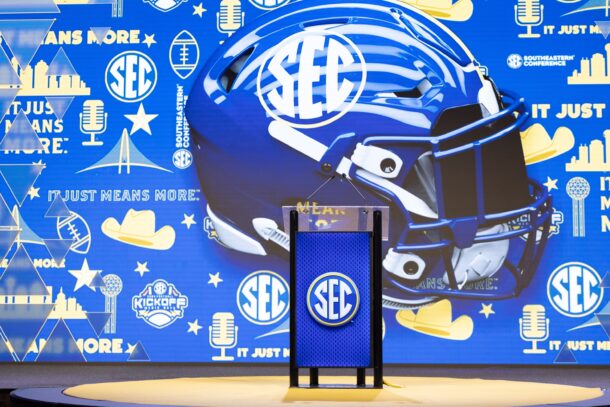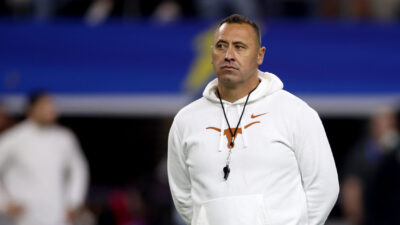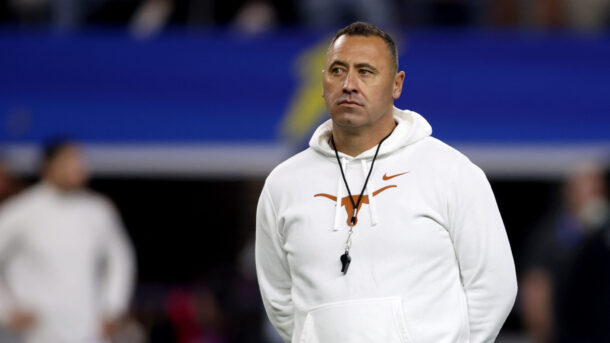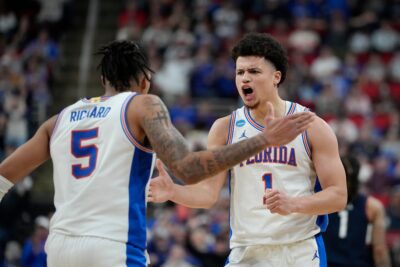Ad Disclosure
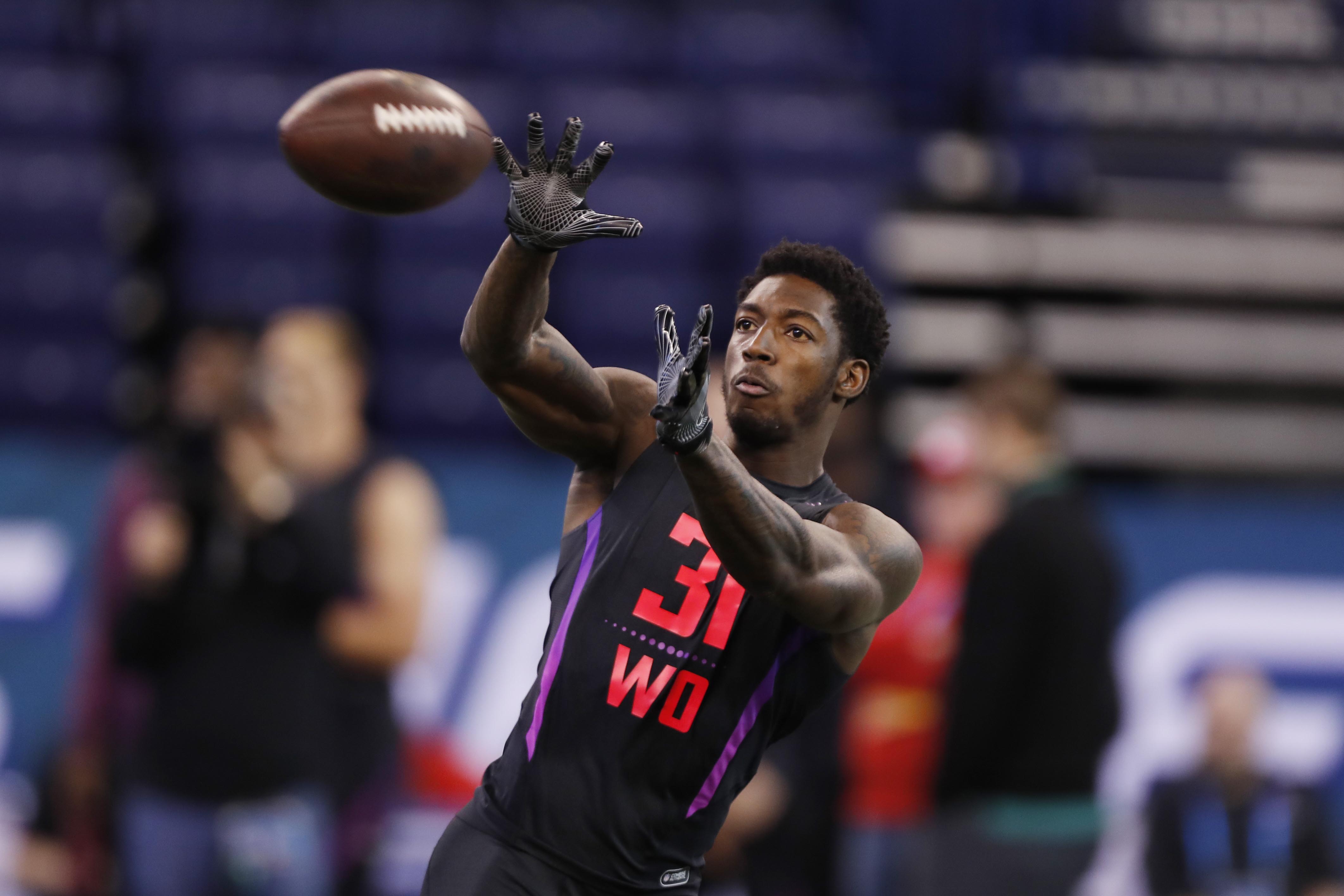
10 SEC receivers were drafted. Who is in the best position to make an impact in 2018?
By Rick Stavig
Published:
The SEC landscape has added more explosive passing attacks in recent years after decades of old school, grind-it-out, 3-yards-and-a-cloud-of dust ball. Even the traditional offenses at programs like Alabama and LSU have slowly adapted to the changing times and added their playbook with more spread principles.
The result has been an influx of talented receivers opting to stay in the Southeast or make their way there. And because no other conference develops talent like the SEC, we’ve seen more pass catchers being drafted who are making early impacts. Take for instance, some of the elite receiving talent that has come from the SEC in recent years – Julio Jones, A.J. Green, Odell Beckham Jr., Jarvis Landry, Mike Evans, Amari Cooper, Alshon Jeffery, etc.
The SEC recently saw 8 WRs and 2 TEs selected in the 2018 NFL Draft. Which of those guys will be the latest to make an early impact in their NFL careers? Here’s a look at those guys in the order they were drafted.
1. TE Hayden Hurst, 1st round, Baltimore Ravens
The Ravens have tried numerous times to find Todd Heap’s replacement at TE since 2010 and have spent considerable draft capital trying to fill the void, though the results have been remarkably poor. Hurst should be the solution to their longstanding problem and give them the reliable threat underneath and down the seams they’ve been looking for.
QB Joe Flacco has a huge arm and the Ravens like to take shots deep downfield, which opens things up underneath for an athletic playmaker like Hurst to make plays and pick up chunk yardage. He still needs work as a blocker, but his soft hands and ability to get separation from linebackers should quickly make him a go-to target for Flacco, especially in the red zone.
2. WR Calvin Ridley, 1st round, Atlanta Falcons
Wide receiver definitely wasn’t a pressing need for the Falcons in this draft, but when a talent like Ridley unexpectedly falls to No. 26, it’s understandably hard to take a pass. He’s not the biggest or strongest receiver and his frame undoubtedly scared some teams away, but he’s a very savvy and swift route runner with very good hands who can play out of the slot or on the outside at flanker or split end.
The Falcons are in good shape with their receiving unit with Julio Jones and Mohamed Sanu on the outside, but did lose slot WR Taylor Gabriel in free agency so Ridley will likely get his start there, where he should be a great fit. His ability to separate with quickness and fluid route running will find him open frequently, giving QB Matt Ryan yet another target to take advantage of. With the amount of single man coverage he’ll constantly be facing, he could have a huge year.
Calvin Ridley + Julio Jones.
A scary @AtlantaFalcons offense just got better. pic.twitter.com/UOidZ9z4rT
— FOX Sports: NFL (@NFLonFOX) April 28, 2018
3. WR Christian Kirk, 2nd round, Arizona Cardinals
Kirk has the opportunity to make a big impact right away in Arizona. The Cardinals are starving for a legitimate receiving threat opposite Larry Fitzgerald and Kirk gives them the benefit of not only boosting their passing attack but also helping out in the return game. He doesn’t have a huge catch radius and is still improving as a blocker, but he’s electric with the ball in his hands and can turn a short gain into a large gain with relative ease.
Some think Kirk is destined for the slot due to his height at 5-11, but I think he’s physical enough against press to consistently get separation at the next level on the outside. Ideally, they put him at flanker, where he’ll be off the line and they can use him in motion and end-arounds to fully capitalize on his diverse skill set.
4. WR D.J. Chark, 2nd round, Jacksonville Jaguars
I thought this was a great pick by the Jags because Chark has prototypical length and deep speed to become a huge weapon at the next level. He’s still raw mechanically, needs to use his hands better to get separation against press, and of course improve his route running, but those are things that can be taught. The things that can’t be taught – height, speed, natural hands – Chark has in abundance.
I don’t necessarily think Chark will make a big impact right away because the Jags have a relatively deep receiving corps with Marqise Lee, Donte Moncrief, Keelan Cole and Dede Westbrook, so they’ll probably bring Chark along slowly. I do expect him to be used in certain packages though as a deep weapon to take advantage of QB Blake Bortles’ arm strength, especially with the attention Lee and Moncrief will merit.
5. WR Antonio Callaway, 4th round, Cleveland Browns
High risk, high reward. The Browns took a gamble on Callaway in the fourth round as his constant battles off-the-field might prevent him from playing much on the field, but if he can stay out of trouble, they found a first-round talent midway through the draft. He doesn’t have great size at 5-11, but he’s one of the most naturally gifted playmakers you’ll find – just get him the ball in space and let him do the rest.
The Browns have a deep receiving unit with Jarvis Landry, Josh Gordon and Corey Coleman, so they don’t need Callaway to take on a big role right away, but I wouldn’t be surprised to see him replace Coleman for touches sooner rather than later.
6. WR J’Mon Moore, 4th round, Green Bay Packers
Moore is another guy who likely won’t be pressed into duty early on because he’s entering a relatively full receiving unit with Davante Adams, Randall Cobb and Geronimo Allison. With that said, Cobb will likely be out the door in the near future and Allison is inconsistent, so while Moore might not make an immediate impact, I do expect him to turn into a productive receiver in the near future.
Moore doesn’t possess elite deep speed, but he’s very quick and explosive, which he uses well to gain separation, and he capitalizes on his size and frame (6-3/207) to box out smaller DBs. And of course, playing alongside QB Aaron Rodgers will obviously aid his development, as well.

7. WR Damion Ratley, 6th round, Cleveland Browns
He was a bit of a surprise pick because many, myself included, had him graded as a projected free agent (PFA). With that said, the sixth and seventh rounds are generally not intended for polished prospects who are expected to come in and compete right away – they’re for high upside developmental prospects, which is exactly what Ratley is.
Ratley is a size-speed guy at 6-3, 210 pounds and running a 4.45, showing impressive athleticism and lateral mobility for his frame. He’s very raw though, showing inconsistent hands and running below average routes. I don’t expect him to come in and blow people away early in his career, but with patience and time, which Cleveland appears willing to afford, he has some potential.
8. WR Russell Gage, 6th round, Atlanta Falcons
Gage is a better athlete than he is receiver at this point, but he shows some upside developing into a decent slot WR. He switched over from CB before his junior season so he’s still learning the nuances of the position, and the Falcons took Ridley in the first round, thus I wouldn’t expect him to make much of an impact in the Falcons passing game. If he is to make an impact (and the roster) as a rookie, it’ll be for special teams play, an area he excels.
9. TE Jordan Thomas, 6th round, Houston Texans
Thomas is very much a project as he needs a lot of work developmentally to be able to contribute early on. Hands, routes and getting separation are huge areas of weakness for Thomas at this point, but there’s no denying his physical skill set and potential. He’s a physical freak at 6-6/280 and running a 4.74, displaying the raw athleticism and tools to make scouts salivate. He needs a lot of time and work, but he’s certainly got potential. Don’t be surprised if he makes the move to the defensive side of the ball if things don’t work out at TE.
10. WR Javon Wims, 7th round, Chicago Bears
I was more than a little surprised to see Wims fall this far in the draft, because I really like his size (6-3/215) and physicality. His hands are a bit inconsistent, but he is prone to acrobatic catches in traffic, and he uses his size to his advantage against smaller DBs. He’s not a burner but should be a classic possession WR at the next level. Chicago has invested heavily in their WR unit this year with Allen Robinson and Taylor Gabriel in free agency, and they spent a second round pick on Anthony Miller, so he might have a tough time making a consistent impact early on, but could see some time in red zone packages.
Rick Stavig, who played at Ole Miss and Shippensburg University, is the owner of SE Scouting. A veteran scout, he specializes in the NFL Draft and recruiting coverage.
